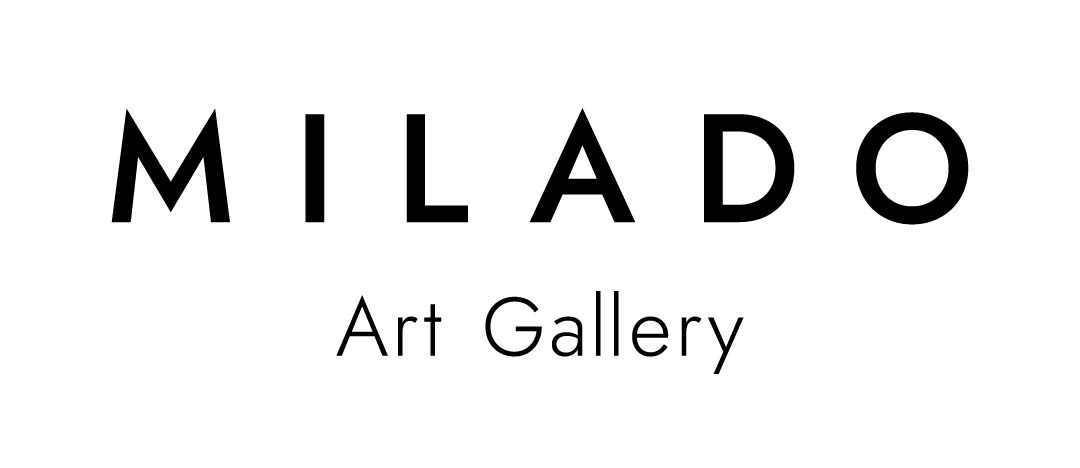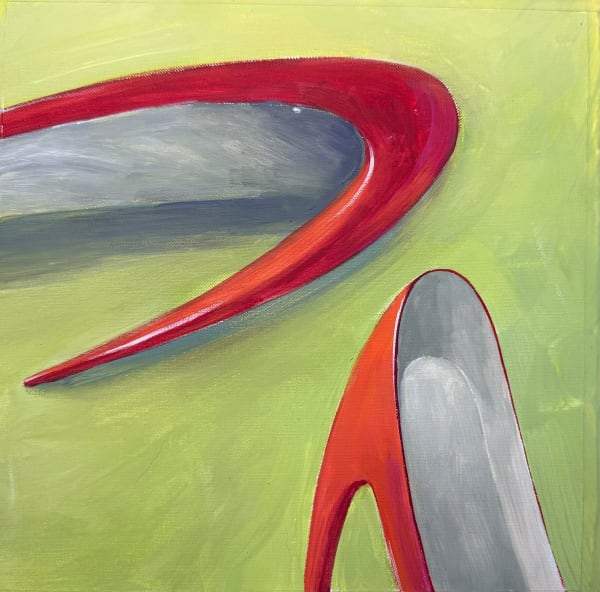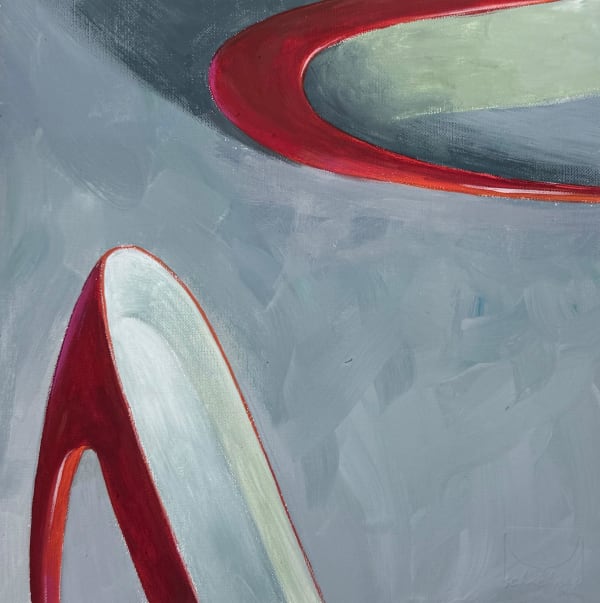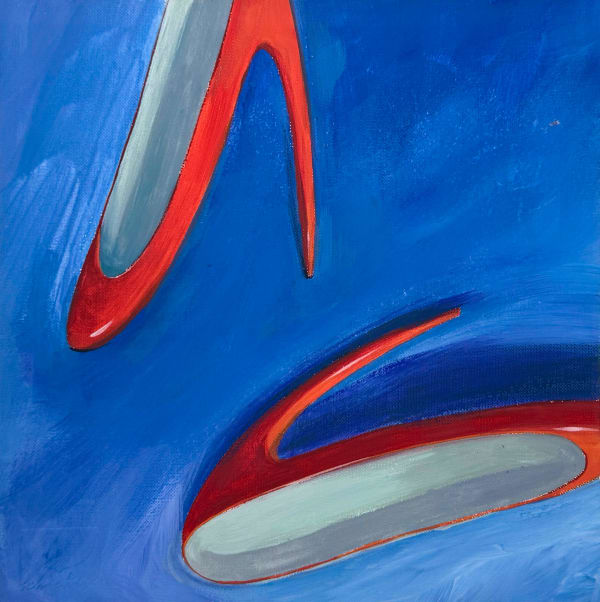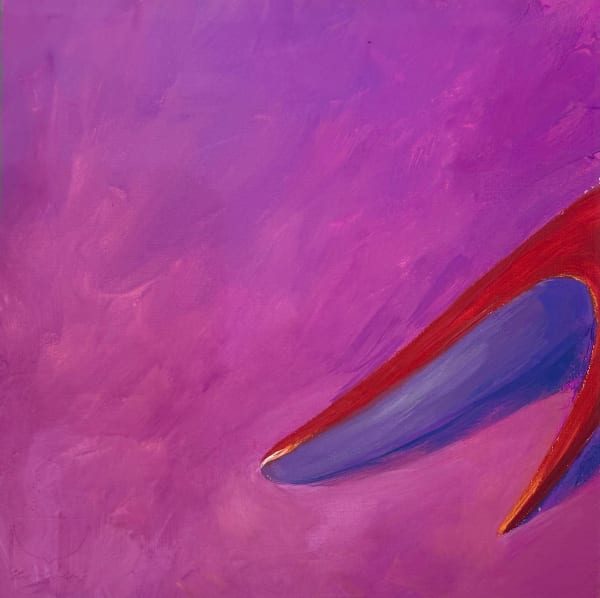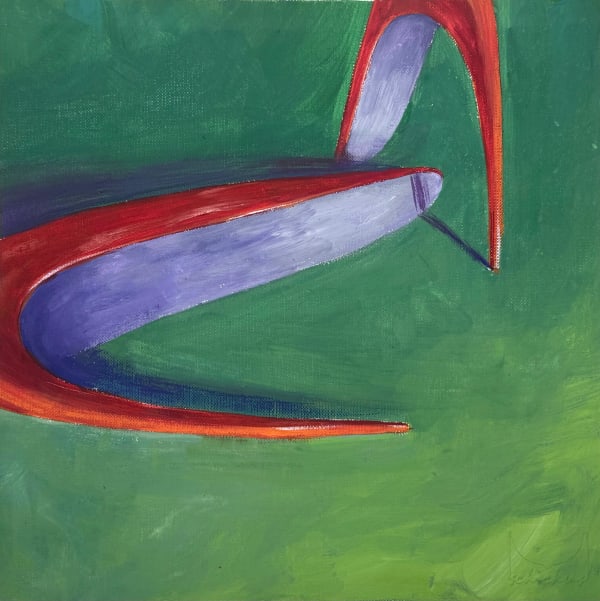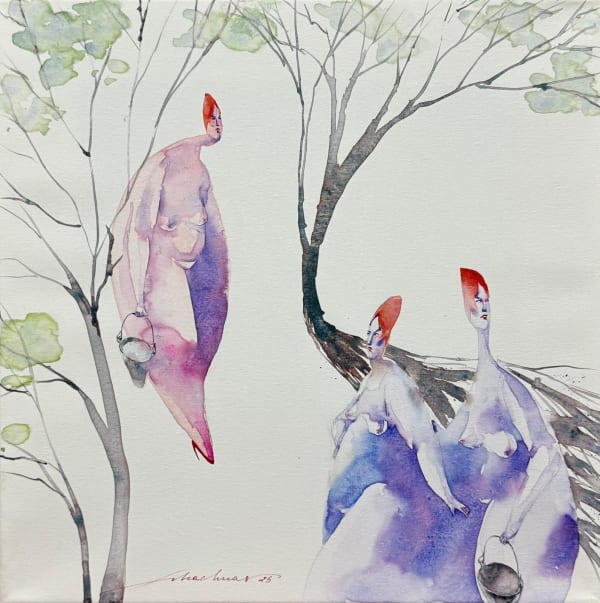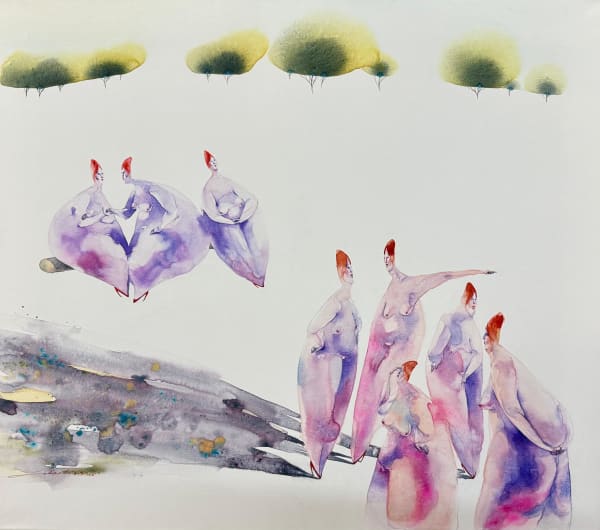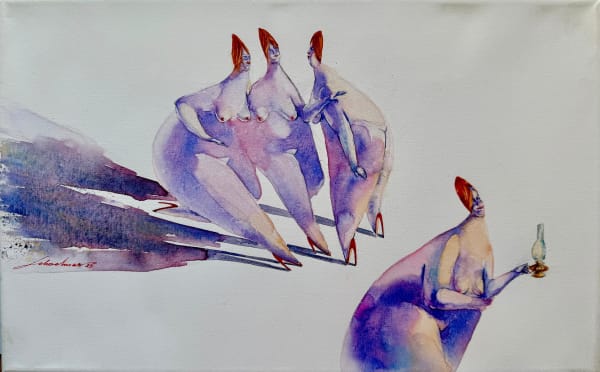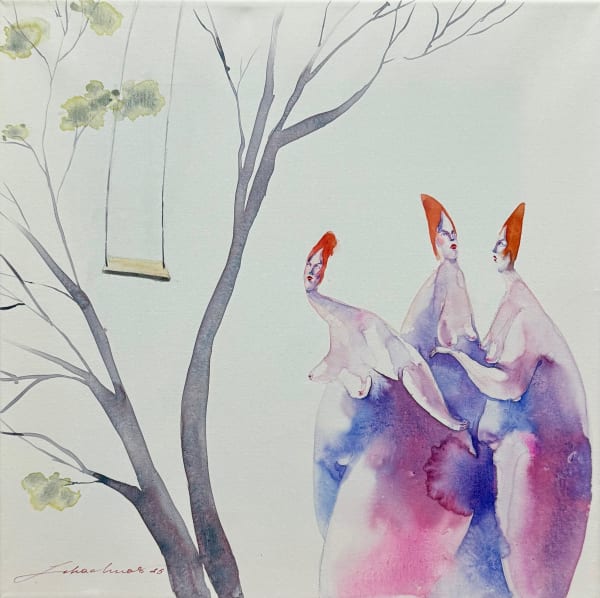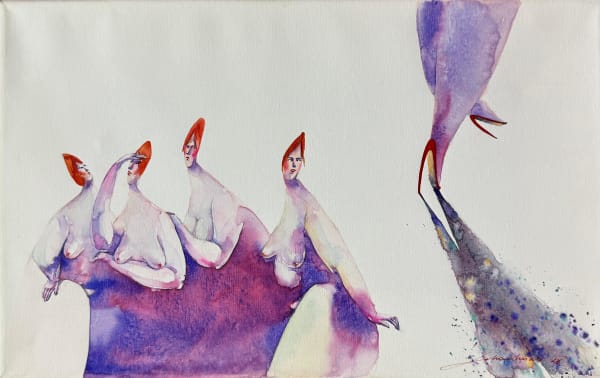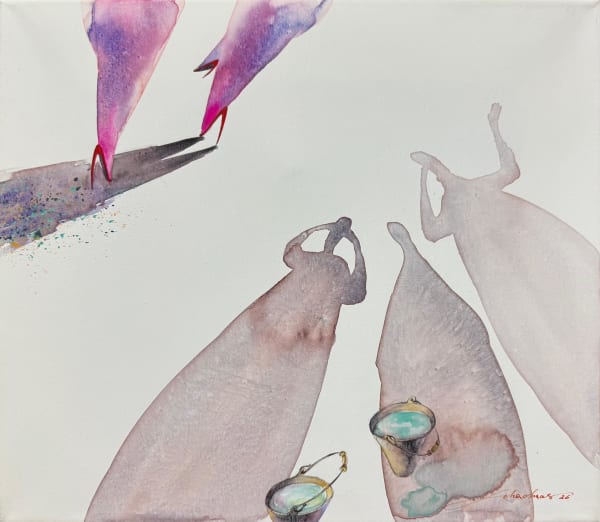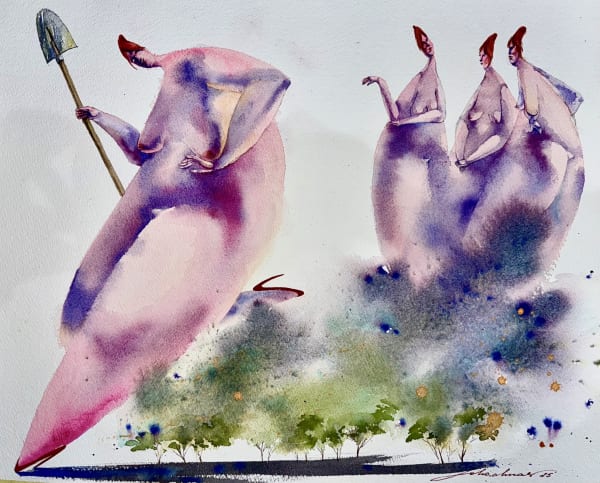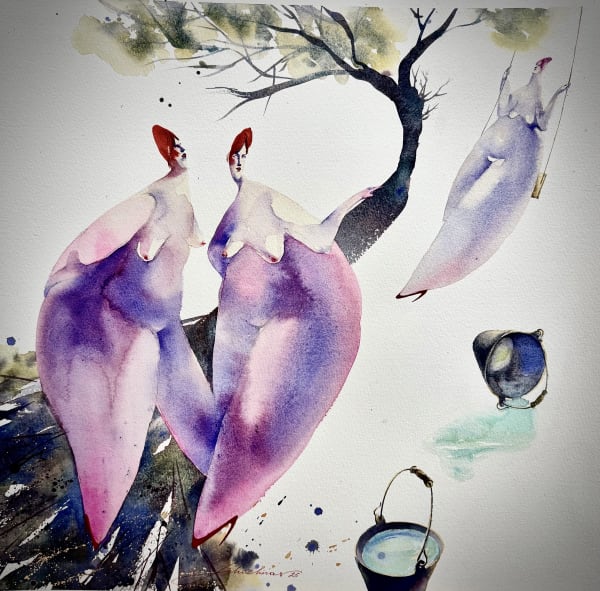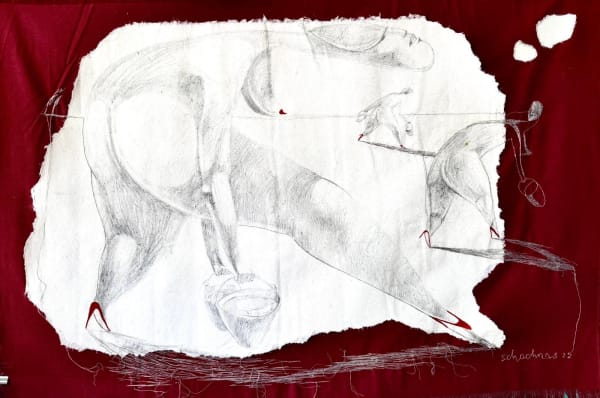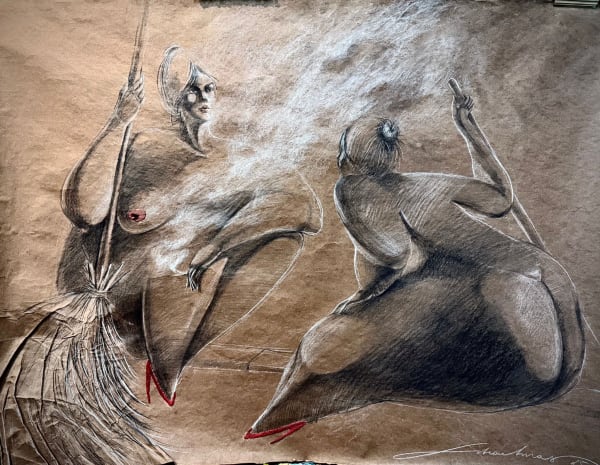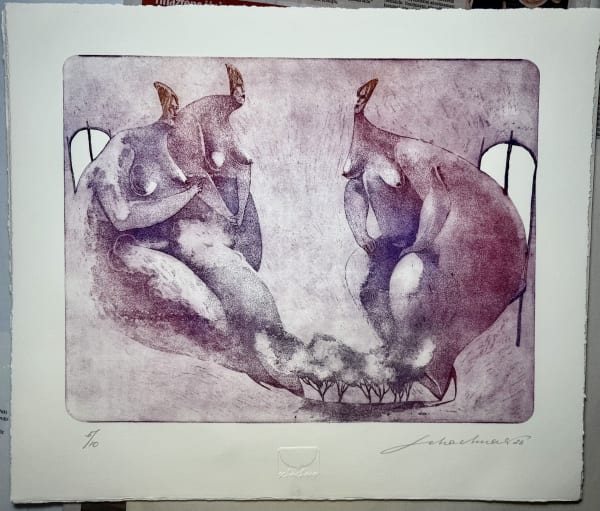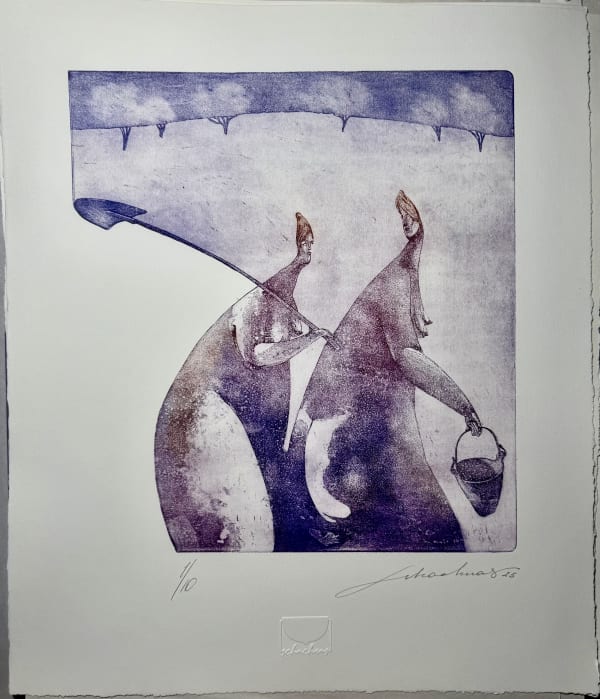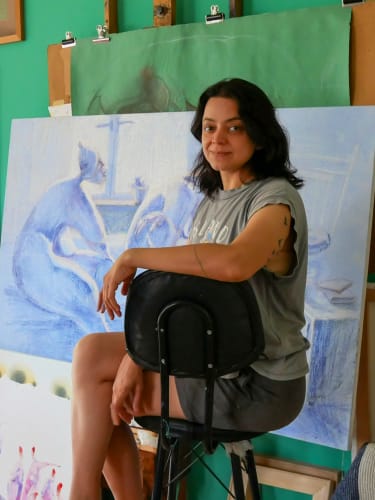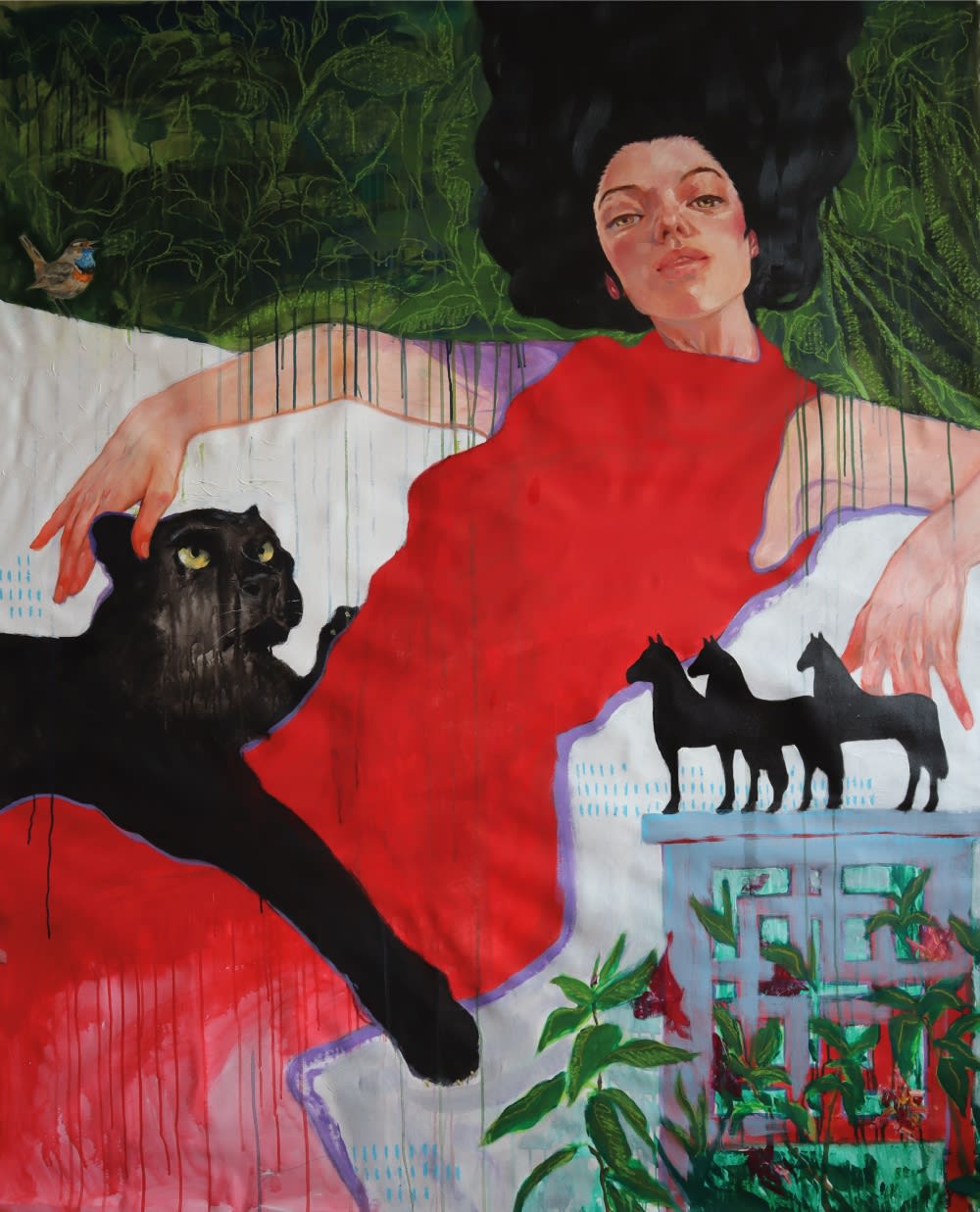Shahnaz Aghayeva
Azerbaijan, b. 1984
Shahnaz Aghayeva (b.1984), Azerbaijan multidisciplinary artist lives and works in Bodrum, Turkey.
Shahnaz defines herself as a woman artist whose practice challenges the fundamental societal roles imposed on women. Her work acts as a form of protest, seeking to reveal the nuanced and often hidden dimensions of the female experience - frequently misrepresented or oversimplified through the lens of the male gaze, particularly within Eastern cultural contexts. She seeks to reveal the aspects of female experience that only women truly know - layers of reality that are often hidden or ignored.
Shahnaz’s art features exclusively female figures, often depicted with the hair is always tied up - a visual symbol of constant busyness and responsibility. The large, rounded lower female forms represent a child’s perspective, gazing upward at women. From this low viewpoint distorts the proportions: the heads appear much smaller in comparison. Translated into art, this distortion becomes a form of admiration and reverence.
The portrayal of the female figure from this perspective, regardless of the artist's take on femininity or art itself, creates a sense of elevation. It sends a message to the viewer: to look at the feminine form as something sacred and idealised.
Moving between abstraction and figuration, her stylised nude forms are classically composed but disrupted by shifts in scale and perspective. These distortions reflect the fluidity of female identity and sexual autonomy as society evolves toward more inclusive understandings of gender.
-
 Yellow, 2025
Yellow, 2025 -
 Grey, 2025
Grey, 2025 -
 Blue , 2025
Blue , 2025 -
 Purple, 2025
Purple, 2025 -
 Green, 2025
Green, 2025 -
 Follow me I know the way , 2025
Follow me I know the way , 2025 -
 About adult life, 2025
About adult life, 2025 -
 Internal disagreements, 2025
Internal disagreements, 2025 -
 Let's follow me, 2025
Let's follow me, 2025 -
 Nostalgia for myself, 2025
Nostalgia for myself, 2025 -
 On different paths, 2025
On different paths, 2025 -
 Everyone has their own routine, 2025
Everyone has their own routine, 2025 -
 Taking advantage of the moment, 2025
Taking advantage of the moment, 2025 -
 Untitled, 2025
Untitled, 2025 -
 Longing for childhood, 2025
Longing for childhood, 2025 -
 Misunderstanding, 2024
Misunderstanding, 2024 -
 Lilit and Eve, 2025
Lilit and Eve, 2025 -
 Sweet or sour, 2025
Sweet or sour, 2025 -
 Personal search, 2022
Personal search, 2022 -
 Waste of time, 2025
Waste of time, 2025 -
 Smoke break, 2025
Smoke break, 2025 -
 Secret meetings, 2025
Secret meetings, 2025 -
 Secret meetings, 2025
Secret meetings, 2025
Shahnaz Aghayeva (b.1984) is an Azerbaijan multidisciplinary artist lives and works in Bodrum, Turkey.
Shahnaz defines herself as a woman artist whose practice challenges the fundamental societal roles imposed on women. Her work acts as a form of protest, seeking to reveal the nuanced and often hidden dimensions of the female experience - frequently misrepresented or oversimplified through the lens of the male gaze, particularly within Eastern cultural contexts. She seeks to reveal the aspects of female experience that only women truly know - layers of reality that are often hidden or ignored.
Shahnaz’s art features exclusively female figures, often depicted with the hair is always tied up - a visual symbol of constant busyness and responsibility. The large, rounded lower female forms represent a child’s perspective, gazing upward at women. From this low viewpoint distorts the proportions: the heads appear much smaller in comparison. Translated into art, this distortion becomes a form of admiration and reverence.
The portrayal of the female figure from this perspective, regardless of the artist's take on femininity or art itself, creates a sense of elevation. It sends a message to the viewer: to look at the feminine form as something sacred and idealised.
Moving between abstraction and figuration, her stylised nude forms are classically composed but disrupted by shifts in scale and perspective. These distortions reflect the fluidity of female identity and sexual autonomy as society evolves toward more inclusive understandings of gender.
